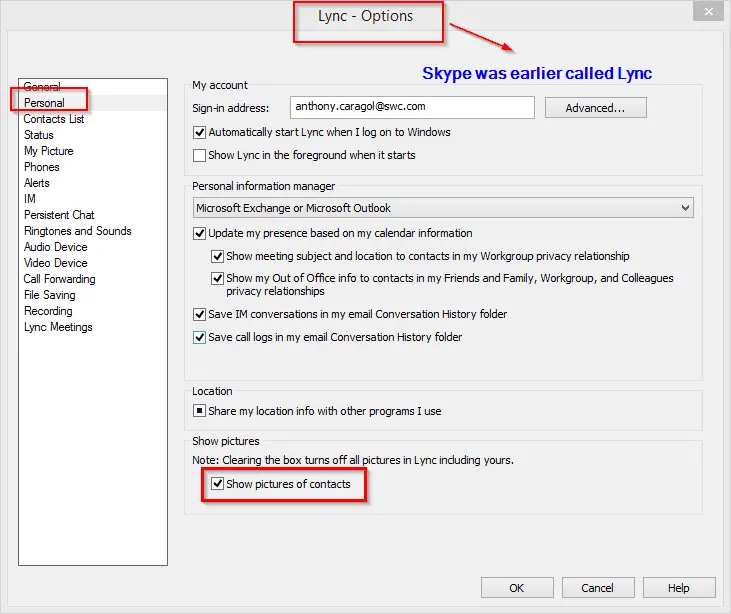

In Outlook 2016, go to the Conversation History folder, select the conversation(s) you would like to delete and choose Delete from the menu.Make sure that the client options are configured to save the conversation history: Locate Skype for Business/Lync Client > Options > Personal. As long as EWS or MAPI shows Status OK, go on to the following troubleshooting steps. Note: you can only delete one conversation at a time.ĭeleting multiple conversations or delete permanentlyĭeleting multiple conversations or deleting a conversation permanently can only be done in Outlook. Note The conversation history feature uses EWS to create and save the folder. In the main Skype window, go to the Conversations section, right-click the message and select Delete Conversation.Conversations are indicated by a speech bubble icon. In the main Skype for Business window click on the Conversation icon.You can stop saving conversations by disabling the option ( Options > Tools > Options > Personal). Skype for Business conversations are saved by default. Click Send an IM to start the conversation. Your message will go to all group members.Right-click the group name in your contacts list.Search for the person’s name or find them in your contact list.

Clicking the Invite More People button at the top of the conversation window to display the directory.If you have already started an IM conversation, you can add others to it by: If you do not want to receive new IM alerts, set your presence status to Do Not Disturb. The IM conversation window will open to display the message. To see the message, click anywhere on the photo area to accept it.When someone starts a new IM conversation with you, an alert pops up on your screen. If a person’s status is set to Do Not Disturb, your message will not be sent.You can use the Notification tools to add an attachment, emoticon, or mark the message as important.Press the Return key or click the send icon.Type your message in the new message area.Double-click the contact in the Skype main window.Starting an IM conversation with one person You can have an IM conversation with one or many people, send pictures and files or add audio or video. If that's the case, then you need to add the following entry to the configuration section of the available at C:\Program Files\Skype for Business Server 2019\Server\Core\ messaging (IM) allows you to communicate with people in real time. Right-click Command prompt and select Run as administrator.Įnter the following command and press Enter:Ĭonfirm if your local domain is set explicitly in proxy bypass list as the following example (in this example, is local domain name): You can use netsh to check proxy bypass list through an elevated command line: Note If the proxy server configuration includes reference to your local domain name in proxy bypass list proxy, then proxy server details without bypass list must be entered in the configuration section of the file for each front-end server. 537 for Skype for Business Server 2015, Front End Server and Edge Server.
Skype for business save conversation history outlook install#
To fix this issue, install the January 2019 cumulative update. In addition, as the on-premises mailboxes are local resource, the Autodiscover process works fine.

As the Exchange on-premises servers can't directly connect to Exchange Online, the connection fails. The issue occurs because the Exchange CAS server is redirecting the Autodiscover request to Exchange Online directly instead of using the proxy server. In addition, the on-premises users won't be affected. In this scenario, the user of the account can't use the feature of server-side conversation history to save the conversation history in the Exchange online mailbox. You set up an account by creating an Exchange online mailbox. You enable the server-side conversation history feature by using the conversation history configuration settings for Skype for Business. You set up the Skype for Business Server OAuth configuration settings (-ExchangeAutodiscoverUrl-) pointing to your on-premises Exchange CAS server. You implement the Skype for Business Server 2015 Front-End pools with the proxy and without a direct access to the Internet. You are in a Microsoft Skype for Business Server 2015 on-premises and Exchange hybrid environment.


 0 kommentar(er)
0 kommentar(er)
